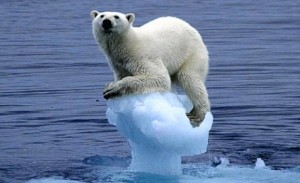Your Action Makes a DifferenceHelp to create compost, which increases soil moisture, combats erosion, supports essential soil bacteria, controls for weeds and stabilizes soil ph.
Support the creation and local use of compost rather than chemical fertilizer. Reduce use of chemical fertilizers which flow into our rivers, soil, plants and animals. Reduce the energy being used to incinerate trash. Reduce emissions that come from the burn plant. Reduce toxic ash that must be buried in landfill. Reduce costs and emissions related to the transportation of landfill ash. Alleviate the burdens and expenses related to aging incineration plants. Reduce methane gas, a greenhouse gas which is created from organics which are disposed in landfills. Reduce the number of plastic bags used in the home. Be a role model for your family, children and community. Polar bear on receding ice
According to the Connecticut Department of Energy & Environmental Protection, the single largest component of solid waste sent to incinerators and landfills is food waste.
A study by the University of Arizona in 2004 indicated that 14 to 15% of United States edible food is untouched or unopened, amounting to $43 billion worth of discarded, but edible, food. Another survey, by the Cornell University Food and Brand Lab, found that 93 percent of respondents acknowledged buying foods they never used. According to the Natural Resources Defense Council, 40% of food in the United States is never eaten, amounting to $165 billion a year in waste, taking a toll on the country's water resources and significantly increasing greenhouse gas emissions. |







